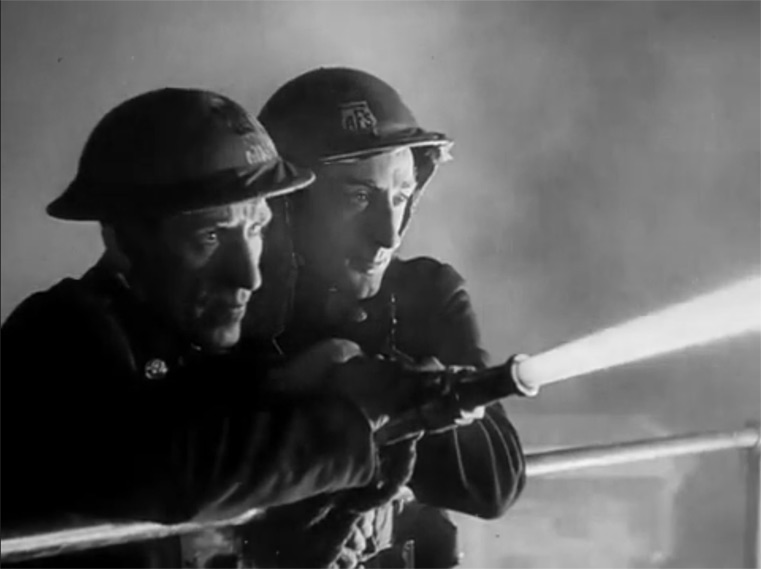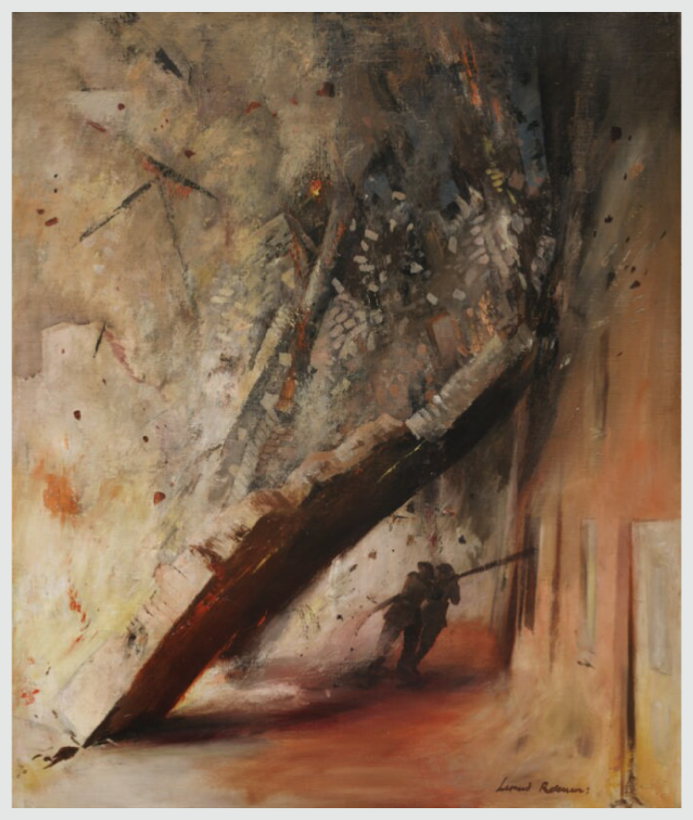Six yards in front stood the blazing building. A minute before I would never have distinguished it from any other drab Victorian atrocity happily on fire. Now I was immediately certain of every minute detail.
–William Sansom, ‘The Wall’ (1941)

William Sansom was a short story writer and firefighter during the London Blitz. In these sentences from his story, ‘The Wall’, he describes what it feels like to arrive at the scene of a burning building and find yourself fiercely alert to the smallest details. But, on the subject of smallest details, why does Sansom use this word ‘happily’ here — ‘happily on fire’? This was one of the questions students from Year 9, visiting the University of Cambridge, put to the lecturers discussing Sansom’s short story with them. Answers took in the buried double meaning of the word (happily; cheerful / happenstance; by chance), mid-century views of Victorian architecture, and the story’s complex emotional work. A lot, it was agreed, was happening here when the students turned their critical eyes and ears on Sansom’s words.
The Year 9 students visited Cambridge in July 2019. They’d been studying short stories with the support of lecturers from the University, which is in partnership with the BBC National Short Story Award and with First Story. They have been thinking about the form, feelings and power of short stories and have been developing their own critical voices. Drs Claire Wilkinson, Ross Wilson, Louise Joy and Helen Thaventhiran, all experts in literary criticism, gave mini lectures about ‘The Wall’. It’s a very dramatic story about the London Blitz, compressed into few words, and capturing some of the best qualities of short story form. Sansom played himself, a firefighter, in the documentary film, Fires Were Started (1943), from which this black-and-white image comes. After the mini lectures, the students put their critical skills to the test in a Question & Answer session.
The text of the short story is available in pdf: William Sansom – The Wall.

Image, Story, History: Dr Claire Wilkinson
“in the painting, the fall can only be represented once”
Claire introduced the story, explained how it derived from a real event, and compared it to a painting by one of the other firefighters, Len Rosoman, who was alongside Sansom when the wall really fell.
Some questions:
- How does the painting differ from the story in its imagination of a similar scene?
- What relation can we trace between stories and historical or ‘real’ events?
- Why does Sansom repeat the word ‘may’ so often?
Sideways Criticism: Dr Ross Wilson [film: 3:33]
“prefaces offer a theory of what it means to be a creative artist”
Ross drew on his research about the critical form of the preface to think about introductions to short stories. Sansom’s stories were introduced by another famous writer of this genre, Elizabeth Bowen, with a typically complex preface-writer’s gesture of going quiet yet promising more to say. (The BBC NSSA anthologies feature introductions.) Ross reflected on what it meant to write next to someone else’s writing, on the task of the preface-writer and the student essay-writer.
Some questions:
- What does ‘criticism’ really mean?
- What different forms can critical writing take?
- Why did Sansom put this story first in his collection?
- What did Jorge Luis Borges mean by saying “The preface is not an inferior kind of toast but a sideways kind of criticism”?
Dread, Diversity and Freedom: Dr Louise Joy [film: 13.13]
“Thinking critically is an assertion of freedom. It’s an enactment of your right to try out your questions.”
Louise, who writes about affect, literature and philosophy, considered how the story opened up some big questions about what we do and what we feel as readers. She teased out the significance of seemingly small details like the definite article in the story’s title and inquired into the possibilities and responsibilities of reading texts from historical moments not part of our own lived experience.
Some questions:
- What do we discover when we turn into our own heads and bodies while we’re reading? Is it easier or more difficult to read in this way, attending to our own reactions closely?
- Is your reading of a story unique to you and, if so, how?
- Can this story teach us what it feels like to feel dread?
- Would this story have less force if titled ‘Wall’ or ‘A Wall’?
From Words to World: Dr Helen Thaventhiran [film: 34.34]
“As critics, when we hold a microscope over words, we see a whole world.”
Helen, who writes about the history and philosophy of criticism, explored some of the significant words of the story (happily, digested, bulge), with a dictionary to hand. She introduced some critical theories about the different ways in which words can carry multiple meanings, whether as abundance or as tension, and suggested some unexpected routes for reading this story in terms of Disney animation, Esperanto, and Chinese ideograms.
Some questions:
- Why does Sansom like turning nouns into verbs? Why are there so many compound words (‘ice-cold’ or ‘red-hot’, for example) here?
- Can we see any of Sansom’s interest in Taoist philosophy at work in the story?
- What important things for this story do we learn about the word ‘digested’ if we look up all its meanings in a historical dictionary like the Oxford English Dictionary?
- Can theories of ambiguous meaning, like William Empson’s (Seven Types of Ambiguity, 1930) help us understand how some words in this story seem to do more than they should?

